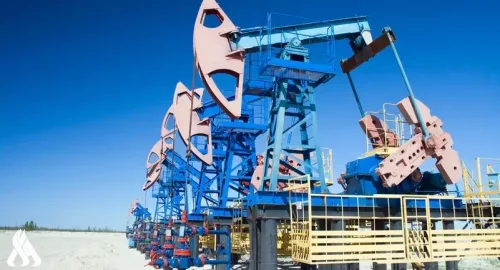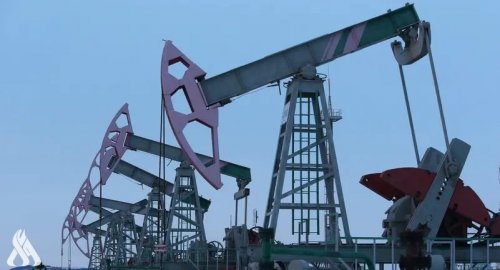
Oil prices rebound after last week's 8% drop as traders weigh China demand concerns

- 22-10-2024, 08:37
INA- SOURCES
Saudi Aramco CEO says he is 'fairly bullish' on China's oil consumption
Oil prices climbed on Monday, regaining some of last week's 8% decline after China lowered its benchmark lending rates, part of a series of stimulus measures to revive the flagging economy for the world's top oil importer.
Price moves
-- West Texas Intermediate crude for November delivery CL.1 CLX24 rose $1.02, or 1.5%, to $70.24 a barrel on the New York Mercantile Exchange after trading as high as $70.90. Front-month prices fell 8.4% last week - the largest weekly decline since Oct. 6, 2023, according to Dow Jones Market Data.
-- December Brent crude BRN00 BRNZ24, the global benchmark, was up $1.14, or 1.6%, to $74.20 a barrel on ICE Futures Europe. It was down 7.6% last week to suffer its worst week since Sept. 6.
-- November gasoline RB00 RBX24 gained 0.5% to trade at $2.0119 per gallon, while November heating oil HO00 HOX24 advanced 0.9%, at $2.1714 a gallon.
-- Natural gas for November delivery NG00 NGX24 tacked on 2.3% to $2.31 per million British thermal units.
Market drivers
Oil's gains Monday came after the People's Bank of China cut interest rates "more than expected as part of a series of economic stimulus measures that should support demand prospects for crude," Samer Hasn, senior market analyst at XS.com, said in market commentary Monday.
On Monday, China lowered its benchmark lending rates, following reductions to other policy rates in late September as part of Beijing's stimulus package to arrest the economic slowdown.
The one-year loan prime rate (LPR) was cut by 25 basis points, to 3.1%, while the five-year LPR was also trimmed by a quarter percentage point, to 3.6%, the People's Bank of China said on Monday.
China's move overnight to lower its benchmark lending rates is "welcome news as it provides some monetary stimulus to the world's biggest importer of crude oil," David Morrison, senior market analyst at Trade Nation, said in emailed commentary. However, "Chinese authorities have as yet failed to meet expectations when it comes to promised fiscal stimulus."
"Investors have lived on hope, but suffered only disappointment," Morrison said.
Hasn also said that the move by China's central bank has been "met with skepticism, along with other previous monetary measures, about the effectiveness in supporting the economy." Given that, he believes oil's gains, supported by the economic factors from China, "may be fragile and subject to rapid reversal."
This move also comes after the slowdown in GDP growth during the last quarter, as well as the slowdown in consumer price inflation and the contraction of producer prices faster than expected, in addition to the continued contraction in house prices, indicating continued weak demand, said Hasn.
Beijing on Friday said the country's gross domestic product slowed to a 4.6% rate in the three months ending September, slightly above the 4.5% forecast but below the 4.7% rate in the second quarter.
Oil prices tumbled around 8% last week after concerns about slowing demand out of China and signs of easing geopolitical risks in the Middle East weighed on U.S. and global benchmark crude futures.
Meanwhile, Saudi Aramco (SA:2222) Chief Executive Amin Nasser said on Monday that he was still "fairly bullish" on China's oil consumption in light of stepped-up policy support aimed at boosting growth. Saudi Arabia is the second largest oil exporter to China.
-Myra P. Saefong -Isabel Wang
This content was created by MarketWatch, which is operated by Dow Jones & Co. MarketWatch is published independently from Dow Jones Newswires and The Wall Street Journal.
SOURCE: MORNING STAR
Egypt announces payment of $38.7 billion of its debts
- International
- 09:58
Syria: Imposing a curfew in the city of Homs
- International
- 07:45
US Central Command: We killed ISIS terrorist leader Abu Yusuf in Syria
- International
- 24/12/20
Liverpool compete with Real Madrid to sign Olympique Lyonnais star
- Security
- 24/12/19
7 ISIS elements arrested in Kirkuk
- Security
- 24/12/20












